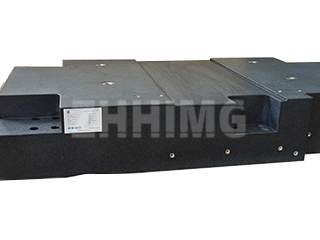The demand for portability in precision testing and metrology is growing rapidly, prompting manufacturers to explore alternatives to traditional, massive granite bases. The question is critical for engineers: are lightweight granite precision platforms available for portable testing, and crucially, does this weight reduction inherently compromise accuracy?
The short answer is yes, specialized lightweight platforms exist, but their design is a delicate engineering trade-off. Weight is often the single greatest asset for a granite base, providing the thermal inertia and mass necessary for maximum vibration damping and stability. Removing this mass introduces complex challenges that must be expertly mitigated.
The Challenge of Lightening the Base
For conventional granite bases, such as those ZHHIMG® supplies for CMMs or semiconductor tools, high mass is the foundation of accuracy. The high density of ZHHIMG® Black Granite (≈ 3100 kg/m³) delivers supreme inherent damping—dissipating vibration quickly and effectively. In a portable scenario, this mass must be dramatically reduced.
Manufacturers achieve lightweighting primarily through two methods:
- Hollow Core Construction: Creating internal voids or honeycombs within the granite structure. This maintains a large dimensional footprint while reducing total weight.
- Hybrid Materials: Combining granite plates with lighter, often synthetic, core materials like aluminum honeycomb, advanced mineral casting, or carbon fiber precision beams (an area ZHHIMG® is pioneering).
Accuracy Under Duress: The Compromise
When a platform is made significantly lighter, its ability to maintain ultra-precision is challenged in several key areas:
- Vibration Control: A lighter platform possesses less thermal inertia and less mass-damping. It becomes inherently more susceptible to external vibrations. While advanced air isolation systems can compensate, the platform’s natural frequency may shift into a range that makes it harder to isolate. For applications requiring nano-level flatness—the precision ZHHIMG® specializes in—a portable, lightweight solution will typically not match the ultimate stability of a large, stationary base.
- Thermal Stability: Reducing mass makes the platform more susceptible to rapid thermal drift from ambient temperature fluctuations. It heats up and cools down faster than its massive counterpart, making it difficult to guarantee dimensional stability over long measurement periods, particularly in non-climate-controlled field environments.
- Load Deflection: A thinner, lighter structure is more prone to deflection under the weight of the testing equipment itself. The design must be meticulously analyzed (often using FEA) to ensure that despite the weight reduction, the rigidity and stiffness remain sufficient to achieve the required flatness specifications under load.
The Path Forward: Hybrid Solutions
For applications like in-field calibration, portable non-contact metrology, or quick-check stations, a carefully engineered lightweight platform is often the best practical choice. The key is to select a solution that relies on advanced engineering to compensate for the lost mass.
This often points toward hybrid materials, such as ZHHIMG®’s capabilities in mineral casting and carbon fiber precision beams. These materials offer a much higher stiffness-to-weight ratio than granite alone. By strategically integrating lightweight yet rigid core structures, it is possible to create a platform that is portable and retains sufficient stability for many field precision tasks.
In conclusion, lightweighting a granite platform is possible and necessary for portability, but it is an engineering compromise. It requires accepting a slight reduction in ultimate accuracy compared to a massive, stable base, or investing significantly more in advanced hybrid material science and design to minimize the sacrifice. For high-stakes, ultra-precision testing, the mass remains the gold standard, but for functional portability, intelligent engineering can bridge the gap.
Post time: Oct-21-2025

